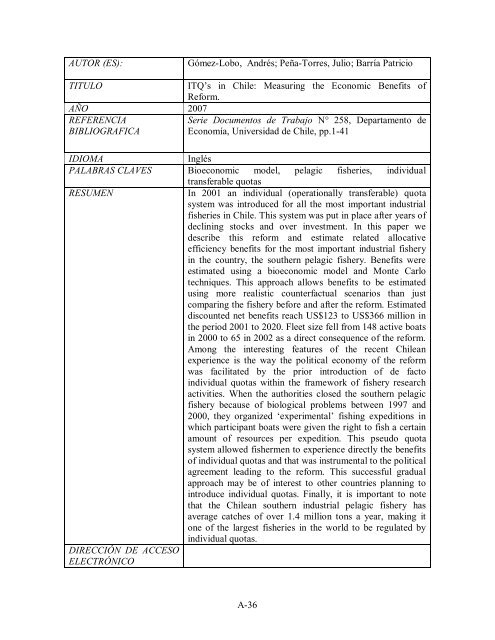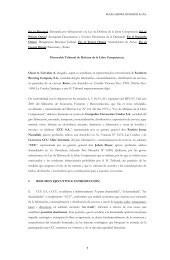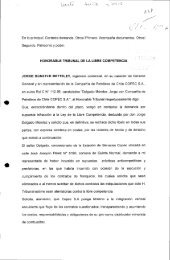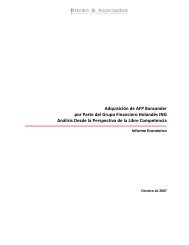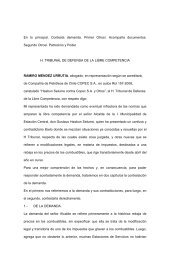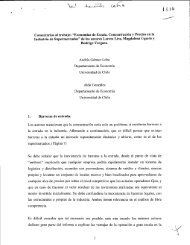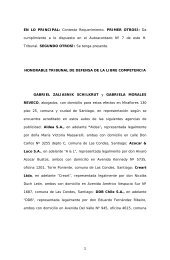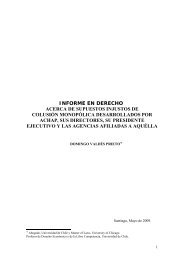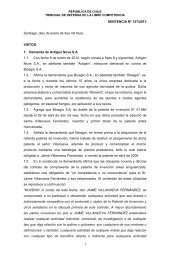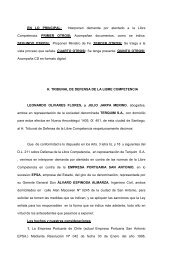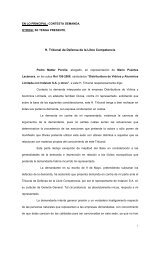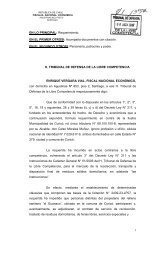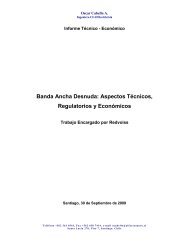Informe Técnico de Consultoría ASPECTOS CONCEPTUALES Y ...
Informe Técnico de Consultoría ASPECTOS CONCEPTUALES Y ...
Informe Técnico de Consultoría ASPECTOS CONCEPTUALES Y ...
You also want an ePaper? Increase the reach of your titles
YUMPU automatically turns print PDFs into web optimized ePapers that Google loves.
AUTOR (ES):Gómez-Lobo, Andrés; Peña-Torres, Julio; Barría PatricioTITULOAÑO 2007REFERENCIABIBLIOGRAFICAITQ’s in Chile: Measuring the Economic Benefits ofReform.Serie Documentos <strong>de</strong> Trabajo N° 258, Departamento <strong>de</strong>Economía, Universidad <strong>de</strong> Chile, pp.1-41IDIOMAInglésPALABRAS CLAVES Bioeconomic mo<strong>de</strong>l, pelagic fisheries, individualtransferable quotasRESUMENIn 2001 an individual (operationally transferable) quotasystem was introduced for all the most important industrialfisheries in Chile. This system was put in place after years of<strong>de</strong>clining stocks and over investment. In this paper we<strong>de</strong>scribe this reform and estimate related allocativeefficiency benefits for the most important industrial fisheryin the country, the southern pelagic fishery. Benefits wereestimated using a bioeconomic mo<strong>de</strong>l and Monte Carlotechniques. This approach allows benefits to be estimatedusing more realistic counterfactual scenarios than justcomparing the fishery before and after the reform. Estimateddiscounted net benefits reach US$123 to US$366 million inthe period 2001 to 2020. Fleet size fell from 148 active boatsin 2000 to 65 in 2002 as a direct consequence of the reform.Among the interesting features of the recent Chileanexperience is the way the political economy of the reformwas facilitated by the prior introduction of <strong>de</strong> factoindividual quotas within the framework of fishery researchactivities. When the authorities closed the southern pelagicfishery because of biological problems between 1997 and2000, they organized ‘experimental’ fishing expeditions inwhich participant boats were given the right to fish a certainamount of resources per expedition. This pseudo quotasystem allowed fishermen to experience directly the benefitsof individual quotas and that was instrumental to the politicalagreement leading to the reform. This successful gradualapproach may be of interest to other countries planning tointroduce individual quotas. Finally, it is important to notethat the Chilean southern industrial pelagic fishery hasaverage catches of over 1.4 million tons a year, making itone of the largest fisheries in the world to be regulated byindividual quotas.DIRECCIÓN DE ACCESOELECTRÓNICOA-36


